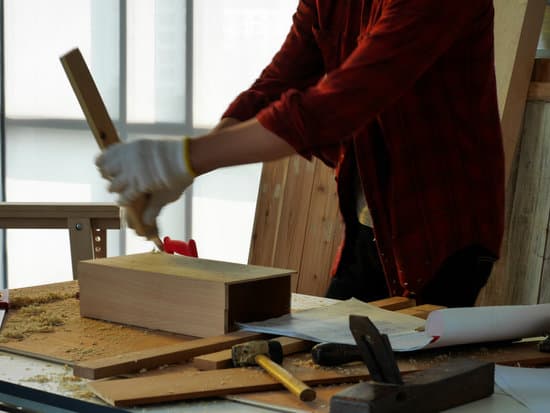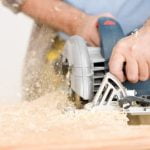When home improvement goes wrong, it can lead to a multitude of issues for homeowners. Whether it’s an improperly installed appliance or a botched renovation project, the consequences of home improvement mistakes can be costly and disruptive. In this article, we will explore the common pitfalls of home improvement projects and provide insights into how homeowners can avoid these disasters.
Home improvement is an essential part of maintaining and increasing the value of a property. From minor repairs to major renovations, investing in home improvement projects can enhance the comfort, functionality, and aesthetics of a living space. However, when these projects go awry, the results can be disastrous.
Throughout this article, we will delve into case studies that exemplify the repercussions of failed home improvement endeavors. We will also discuss the financial implications of rectifying such mistakes and the toll they take on homeowners. Additionally, we will provide practical tips on how to steer clear of home improvement disasters and recover from them should they occur. Lastly, we will underscore the importance of enlisting professional contractors for home improvement projects to mitigate potential risks.
Common Home Improvement Mistakes
When it comes to home improvement, there are plenty of common mistakes that homeowners make. These mistakes can range from minor issues to major disasters that can be costly to fix. It’s important for anyone considering a home improvement project to be aware of these pitfalls and take steps to avoid them.
Underestimating the Scope of the Project
One of the most common mistakes homeowners make when it comes to home improvement is underestimating the scope of the project. This can lead to delays, frustration, and extra costs. Whether it’s a simple renovation or a more complex remodel, it’s important for homeowners to carefully assess the scope of the project and plan accordingly.
DIY Disasters
Another common mistake is attempting a do-it-yourself (DIY) project without the necessary skills or experience. While DIY can be a great way to save money, it can also lead to costly mistakes if not done properly. From botched plumbing jobs to shoddy electrical work, DIY disasters can end up costing homeowners more in the long run.
Ignoring Permits and Regulations
Ignoring permits and regulations is another frequent mistake made by homeowners undertaking home improvement projects. Failure to obtain proper permits or follow local building codes can result in fines, delays, and even having to redo work that doesn’t meet legal requirements.
By being aware of these common mistakes and taking proactive steps to avoid them, homeowners can ensure that their home improvement projects go as smoothly as possible. Learning from these examples and taking precautions when it comes to renovations or remodeling can help prevent potential disaster – both financially and physically – so you don’t get caught with your penis metaphorically in your hand.
Case Studies
Home improvement projects are essential for maintaining and increasing the value of a home. From simple updates like painting a room to more complex renovations such as remodeling a kitchen, the benefits of improving one’s living space are numerous. However, despite the best intentions, home improvement projects can sometimes go awry.
One common mistake that homeowners make is underestimating the scope of a project. They may not fully understand what it takes to complete the task at hand, leading to incomplete or subpar work. Additionally, attempting to tackle a project beyond one’s skill level can also result in costly mistakes. For example, trying to install intricate tile work in a bathroom without the proper knowledge and tools can lead to uneven surfaces and crooked lines.
Another frequent error is cutting corners by using inferior materials or taking shortcuts during the construction process. While this may save money in the short term, it often results in more significant issues down the road. For instance, opting for cheap paint or flooring can lead to premature deterioration and the need for replacement sooner than expected.
Furthermore, some homeowners disregard local building codes and regulations when making improvements to their homes. This oversight can result in unsafe conditions and legal repercussions if not addressed promptly.
To avoid these problems, it’s crucial for homeowners to plan carefully and seek professional guidance when needed. Whether it’s consulting with contractors or doing extensive research before starting a project, taking the time to understand the requirements of a home improvement endeavor can save time, money, and stress in the long run.
- Ensure understanding of project scope
- Higher professionals if necessary
- Follow local building codes
The Cost of Fixing Home Improvement Mistakes
Home improvement projects can be costly, and when mistakes occur, they can lead to even more expenses. Whether it’s a DIY project gone wrong or a contractor’s error, fixing home improvement mistakes can put a strain on the homeowner’s budget. Here are some common costs associated with fixing home improvement mistakes:
1. Additional materials and labor: When a mistake is made during a home improvement project, it often requires additional materials and labor to correct the error. This can include purchasing more paint, tiles, or flooring, as well as paying for the services of contractors or professionals to redo the work.
2. Structural damage: In some cases, home improvement mistakes can lead to structural damage in the home. For example, a botched plumbing installation could result in water damage to walls and floors, requiring significant repairs.
3. Legal and permit fees: If the mistake made during a home improvement project violates building codes or regulations, there may be legal and permit fees involved in bringing the work up to standard.
It is essential for homeowners to budget not only for their initial home improvement project but also for potential costs that may arise if something goes wrong.
4. Emotional toll: The stress and frustration of dealing with a botched home improvement project can take an emotional toll on homeowners as well. They may feel anxious about living in a space that is unfinished or damaged, leading to additional stress.
5. Disruption of daily life: When home improvement projects go wrong, it can disrupt the daily lives of homeowners. They may have to navigate around unfinished or damaged areas of their homes while waiting for repairs to be completed.
To minimize these potential costs and impacts on homeowners,it’s essential to carefully plan and research before starting any home improvement project. Additionally,hiring professional contractors who are licensed and insured can help prevent costly mistakes and ensure that the job is done correctly from start to finish.
The Impact on Homeowners
Financial Burden
When home improvement goes wrong, it can have a significant financial impact on homeowners. Whether it’s a DIY project gone awry or hiring an incompetent contractor, the cost of fixing mistakes can be substantial. Homeowners may find themselves spending more money than they initially budgeted for, leading to financial strain and stress.
Emotional Stress
In addition to the financial burden, home improvement disasters can also take a toll on homeowners emotionally. Living in a space that is unfinished or in disrepair can be incredibly frustrating and can cause feelings of anxiety and helplessness. Furthermore, the disappointment of seeing one’s vision for their home turn into a nightmare can lead to emotional distress and strain on mental well-being.
Impact on Daily Life
When home improvement goes wrong, it can disrupt the daily lives of homeowners. Whether it’s dealing with ongoing construction delays, living in a half-finished space, or having to constantly manage issues that arise from the original mistake, the impact on daily life can be significant. This disruption can affect productivity, comfort, and overall quality of life for homeowners.
Overall, when home improvement goes wrong penis, it has far-reaching consequences for homeowners beyond just the physical aspects of their property. From the financial burden to emotional stress and disruptions to daily life, these impacts highlight the importance of taking precautions to avoid home improvement disasters.
Tips for Avoiding Home Improvement Disasters
Home improvement projects are a great way to update and enhance the look and function of your home. However, sometimes these projects can go terribly wrong, leading to costly and frustrating mistakes that can impact homeowners for years to come. To avoid such disasters, here are some tips to keep in mind.
First and foremost, it is essential to plan carefully before starting any home improvement project. Rushing into a project without considering all the details can lead to oversights that result in major problems down the road. Take the time to research materials, obtain necessary permits, and create a realistic budget for the project.
Another important tip for avoiding home improvement disasters is to hire the right professionals for the job. While DIY projects can be satisfying, certain tasks are best left to skilled contractors who have the knowledge and experience to get the job done correctly. Before hiring anyone, be sure to check references, read reviews, and ask detailed questions about their qualifications.
Finally, communication is key when it comes to successful home improvement projects. Clearly convey your expectations and preferences with any contractors or individuals you hire for the project. Make sure everyone involved understands what needs to be done and how it should be completed. Open communication can prevent misunderstandings that may lead to costly mistakes down the line. By following these tips, homeowners can reduce the risk of their home improvement project going wrong penis and enjoy successful outcomes instead.
How to Recover From a Home Improvement Gone Wrong
Home improvement projects are a common occurrence, and while homeowners often hope to increase the value of their property or simply enjoy a more comfortable living space, sometimes things can go awry. When home improvement goes wrong penis, it can leave homeowners feeling frustrated and overwhelmed. However, there are ways to recover from these mishaps.
First and foremost, it’s important for homeowners to take a step back and assess the situation calmly. Panicking or making hasty decisions can often make matters worse. Instead, carefully evaluate the extent of the problem and consider reaching out to professionals for expert advice.
Once the issues have been identified, it’s crucial to determine the best course of action for rectifying them. Depending on the nature of the mistake, this may involve hiring contractors to fix structural or electrical problems, or simply rolling up your sleeves and tackling minor issues yourself. Regardless of the approach, it’s essential to address any safety hazards first and foremost.
Recovering from a home improvement gone wrong can be a stressful experience. However, by staying level-headed and seeking out appropriate solutions, homeowners can regain control over their living space and ultimately prevent further complications down the line.
| Recovery Steps | Details |
|---|---|
| Assess the Situation | Take time to calmly evaluate the extent of the problem |
| Determine Best Course of Action | Decide whether professional help is needed or if DIY solutions are feasible |
| Address Safety Hazards First | Ensure that any potential safety risks are dealt with immediately |
The Importance of Hiring Professional Contractors
Home improvement is a vital aspect of maintaining and increasing the value of one’s home. From small renovations to major overhauls, improving the living space can enhance comfort, functionality, and aesthetic appeal. However, when home improvement goes wrong, it can result in costly mistakes and frustrations for homeowners.
Common home improvement mistakes such as DIY projects gone awry, faulty installations, and improper measurements can lead to significant problems that can impact the overall safety and integrity of a home. These mistakes can range from minor inconveniences to serious hazards, making it essential for homeowners to be aware of the potential risks involved in undertaking improvement projects without professional assistance.
In order to avoid the plight of becoming a case study in home improvement gone wrong, it is imperative for homeowners to consider hiring professional contractors. Whether it’s for plumbing, electrical work, remodeling, or landscaping, investing in experienced professionals can save time and money in the long run by ensuring that the job is done correctly the first time around.
While DIY projects may seem cost-effective at first, the hazards of making a mistake far outweigh any short-term savings. Therefore, when it comes to home improvement, putting trust in skilled contractors is crucial for the safety and satisfaction of homeowners.
Frequently Asked Questions
Why Does Tim Allen Grunt on Home Improvement?
Tim Allen’s character on “Home Improvement,” Tim Taylor, grunted as a way to add humor and emphasize the physical comedy of his bumbling, DIY-obsessed character. The grunts became a signature part of his comedic performance.

I’m thrilled to have you here as a part of the Remodeling Top community. This is where my journey as an architect and remodeling enthusiast intersects with your passion for transforming houses into dream homes.





